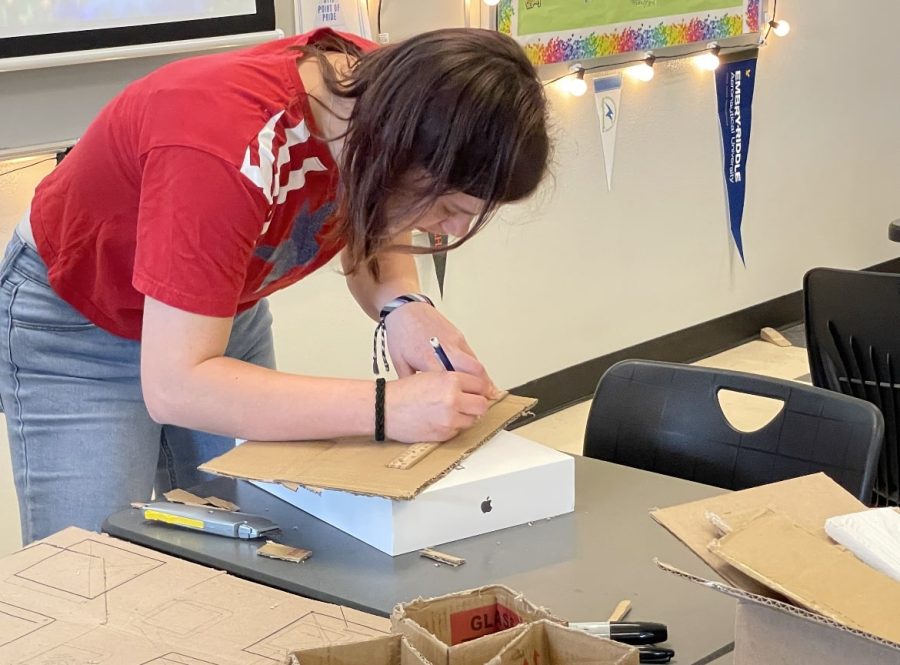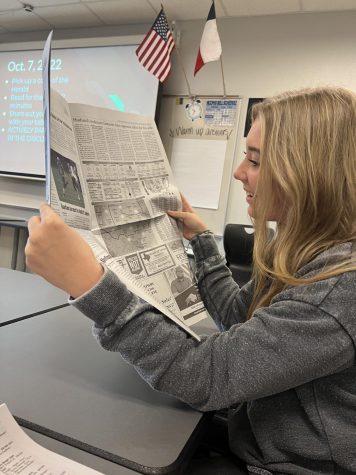PBL Predicament In Junior Year
Junior, Lilian Vickers, working on a project for AVID 3.
December 15, 2022
For many students, projects in our sophomore and freshman year are a prime example of our school’s Project Based Learning style, and many believed that style of learning would carry throughout our four years.
However, as the rigor increases and the content becomes harsher, the curriculum has begun to abandon long-lasting projects. The junior class has noticed a distinct lack of in-class projects, with most long-term assignments designated as homework.
PBL is still present, however, it may look different from what we have seen before and its benefits are prevalent nonetheless. Long-term projects, which juniors are used to, are often not applicable for the junior class due to the fast-paced nature of the curriculum. The classes can no longer use this learning style in the way we are accustomed.
The junior curriculum is harsh and does not allow for any room for wasted time, freshman and sophomore classes better fit the requirements for the long-term project style, but the key components of PBL are still giving students the opportunity to succeed.
Classes such as AP Physics move too fast from unit to unit for multi-week projects to be practical. Instead of long-term student-driven projects, junior-level teachers have taken the components of PBL and changed it to fit faster-moving classes. These can range from assignments encouraging collaboration between students, to finding information without the direct guidance of a teacher. We’ve seen this in the physics classroom, as countless assignments have been student-led, group work. This change is natural with our classes and one we should find welcoming, as its benefits align with larger projects we’ve had earlier on.
The purpose of being in a PBL school is to prepare students for college-level courses. Now that many are seeing the change in difficulty, some are leaning on skills they’ve built before in their underclassmen classes to keep up with the fast-paced curriculum. Long-term projects give students the experience that allows them to properly pace themselves and manage their time effectively.
Freshman and sophomore classes, such as Humanities or World Studies, were easier to implement lengthy projects. Since they are courses with multiple subjects, teachers can hit various topics, allowing students to navigate a month-long project more efficiently. This style of projects is not nearly as present in the junior-level PBL structure. A single-subject course will be significantly more challenging to have projects like the ones we are used to, as it is harder to bridge specific learning points together in a way students can understand. U.S. History, as we have seen, is not as interpretive as our previous history classes because World Studies was able to include the English curriculum to its advantage. The new PBL model still brings about the same core aspects, as there has not been a noticeable drop in collaboration regarding assignments.
Although it may not be something the junior class has seen before, PBL is still with us, although it has changed. Teachers and administrators alike have modified their teachings to the point where PBL is still valuable even in our classes which no longer support extensive projects. As a class, we need to understand this and work with this change, which still strikingly benefits us.






